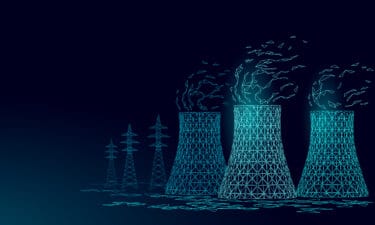Over the past year there have been no shortage of articles citing reasons why oil has bottomed, and each time oil prices resumed their move lower. While this time may be no different, there are several major signs indicating that if oil does resume downward, it will be short-lived.
At the end of 2015 the global oil market was oversupplied by about 1.6 million barrels per day—one million barrels per day more than 2014. In order for prices to improve, this surplus will need to shrink dramatically, preferably to a point where demand exceeds supply and global inventories start to draw-down.
The key to this happening? U.S. and North American production needs to come offline. OPEC producers can also contribute to this by freezing production, but with breakeven costs of less than $10 per barrel, higher-cost U.S. producers will need to come offline first, and there are signs this will finally start to happen in a big way.
1. Credit is tightening and capital budgets are falling
U.S. production has proven to be very resilient, and the biggest reason for this is because these producers have had their massive funding gaps constantly filled by banks that are willing to provide financing. This can’t go on indefinitely, however, and in 2015, 53 U.S. producers filed for bankruptcy.
U.S. producers are currently sitting on a huge $325 billion in debt, and Deloitte recently concluded that one-third of publicly traded oil firms are at risk of bankruptcy. With assets currently worth far less than what is owed to lenders, many lenders are catching on and reducing the size of credit facilities to producers.
One report recently found that 25 distressed U.S. companies have recently seen their credit facilities cut by between 6% and 50%. With U.S. producers expected to have estimated cash flow shortfall of $102 billion in 2016, banks simply cannot afford to continue funding this gap indefinitely.
2. Oil prices are well below U.S. and Canadian breakeven costs
At current prices of about US$30 per barrel, the vast majority of producers are unable to cover the cost of both drilling wells and replacing declining production from wells. The end result is that production needs to decrease.
Half-cycle breakeven costs for U.S. producers are estimated to range between $23 and $60 per barrel, with a mean in the $30-35 range. It is important to note that half-cycle costs only include the costs to actually drill and complete the well.
The “full-cycle” breakeven costs are much higher, and these include the costs to acquire land, locate drilling locations, and build infrastructure. In order for production to be maintained, producers need prices high enough to not only complete wells, but to also locate and drill new wells, and prices are not near these levels.
As a result of lower prices, capital budgets for producers have been decreasing significantly (about 40% in 2015 and another 30% expected in 2016 for Canadian producers). These estimates for 2016 could be conservative, however. TD Bank states that on average, Canadian producers are estimating oil prices will be $45 per barrel in 2016 on average and have set capital budgets accordingly.
With prices around $30 per barrel today, even $40 seems very optimistic at this point, and further capital cuts could be in order. This means production could come off even more.
Play an oil recovery with best-in-class names
Current oil prices simply do not work, but that does not mean prices won’t have further downside, especially considering record inventory levels. This is why investors should look for names with strong balance sheets that can generate free cash flow at low oil prices.
Suncor Energy Inc. (TSX:SU)(NYSE:SU), Crescent Point Energy Corp. (TSX:CPG)(NYSE:CPG), and Vermilion Energy Inc. (TSX:VET)(NYSE:VET) all meet these standards.
Crescent Point recently stated they would be cash flow neutral at $40 per barrel; Suncor is cash flow neutral at around $50 per barrel (but has a very strong balance sheet to fund any gap); and Vermilion would generate positive free cash flow at $40 per barrel.







